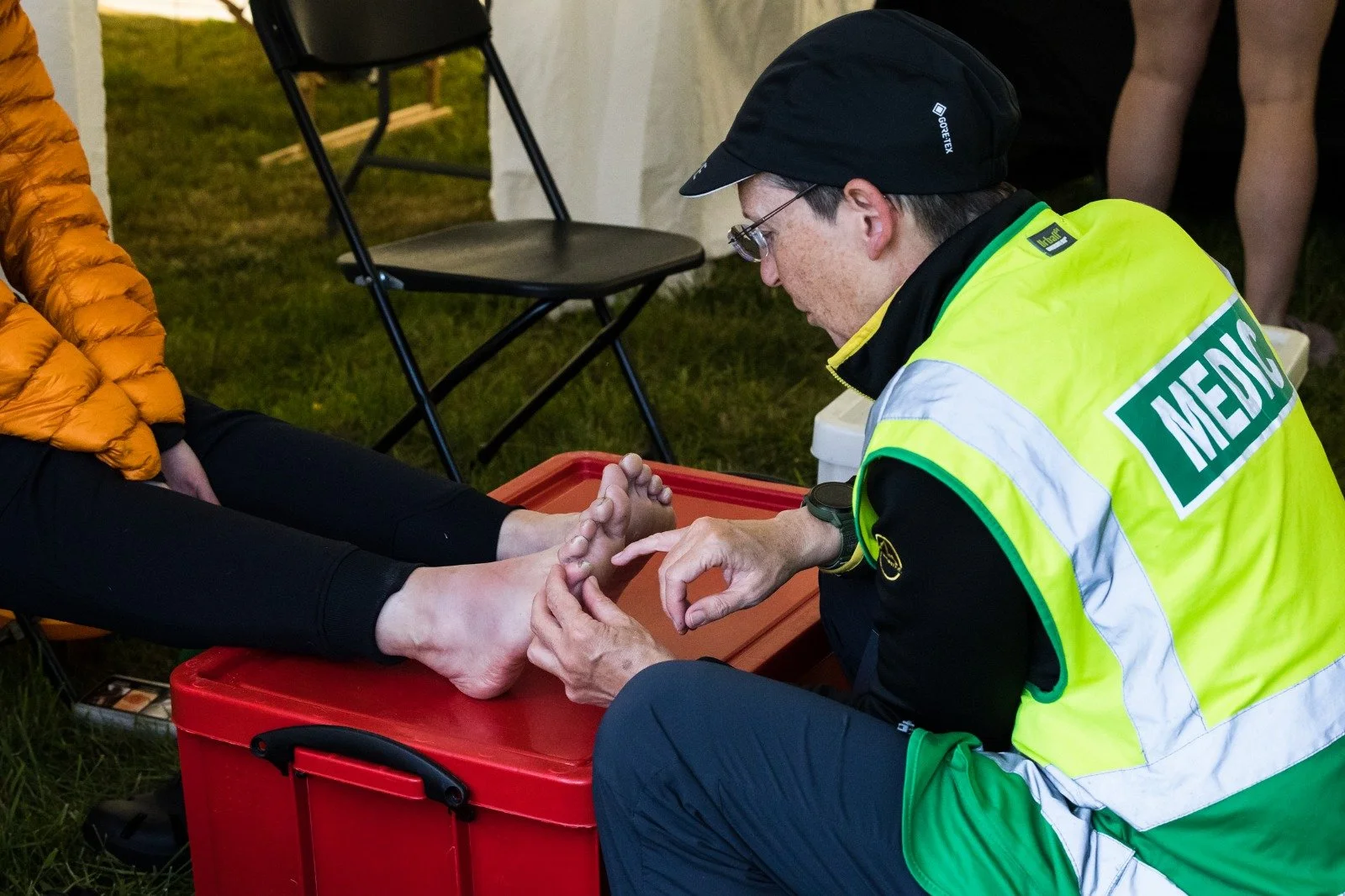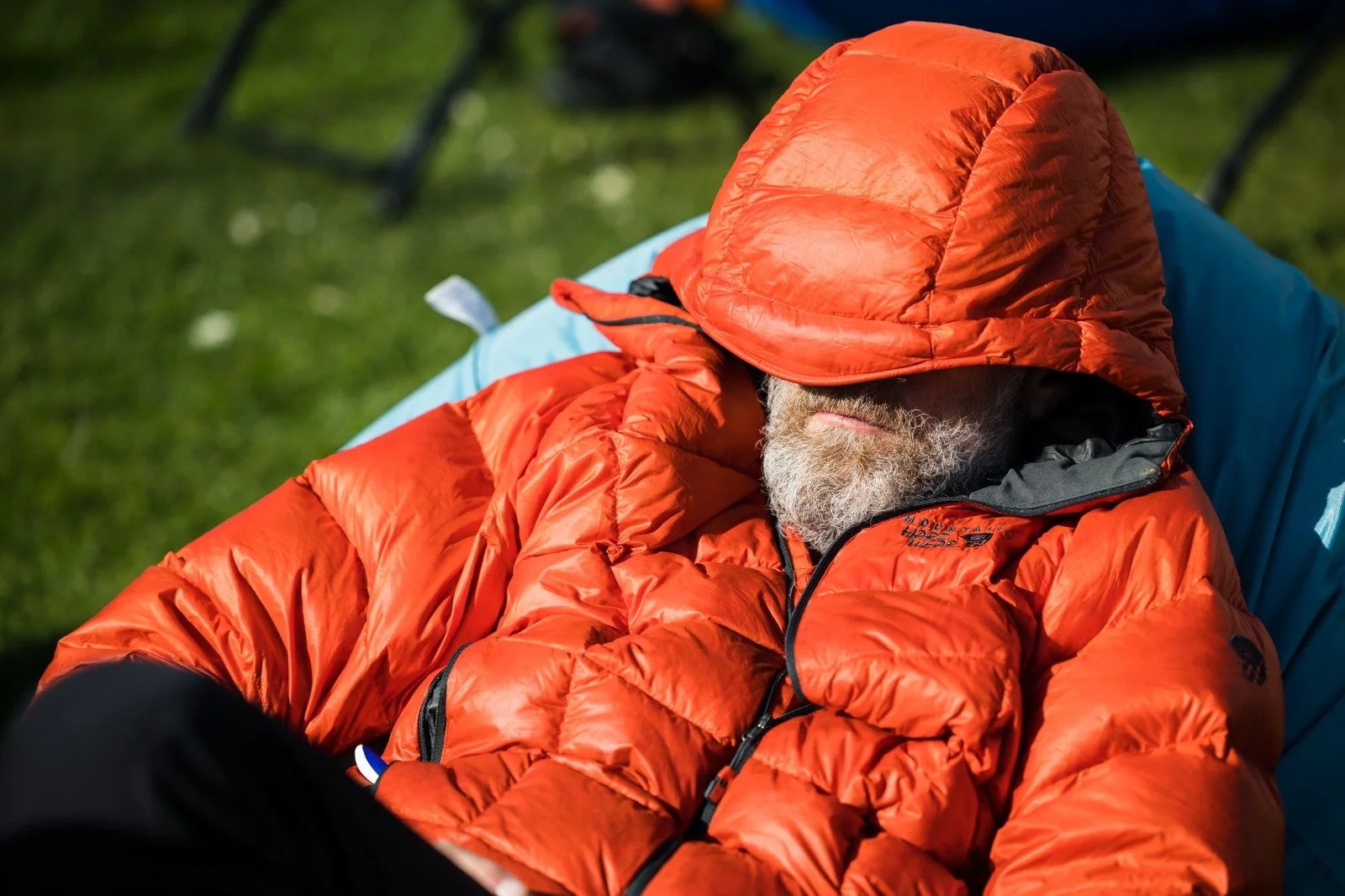Post Cape Wrath Ultra Medical Guidance
By Nikki Sommers, medical director
It's been a big a relief to reach the end of Cape Wrath Ultra without any serious medical emergencies or unwell runners. Whilst we had a steady stream of runners into the medical tent, we mostly saw a mixture of blisters and musculoskeletal injuries. The kind weather meant we didn't see a single case of hypothermia or heat stroke!
Looking after your feet
Whilst we did look after lots of feet during the race, this was perhaps less than expected, due to the relatively dry ground conditions. I'm sure now lots of you will be hobbling around on sore feet. Now is the time to trim away any dead skin around blisters, and use plenty of moisturiser to reduce any callus build up. A urea based moisturiser such as flexitol works really well for this. Keep an eye out for any signs of infection around blisters; in particular any redness that spreads up the foot away from the blister. If you are worried, do make sure you get checked out by a health care professional as it may be that antibiotics are required.
The medical team saw to lots of people’s feet ©No Limits Photography
Please do check for ticks
We removed a lot of ticks during the week; from ourselves, runners and the event crew. Please do have a really good check for ticks, and remove them carefully if you find them. Whilst not common, it is possible to get Lyme disease from a tick bite. The typical bullseye rash usually occurs 1- 4 weeks after the tick bite (please see here for pictures of the kind of rash to look out for) . If you have had a tick bite and feel unwell, or develop the typical rash after the event, please do see your doctor and tell them you've had a tick bite. They will start you on antibiotics, or else carry out further investigations.
Musculoskeletal injuries
As in previous editions of the Cape Wrath Ultra, we saw a massive number of runners with anterior shin pain; a mixture of tendinopathies (tibialis anterior, other extensor tendons) and extensor retinaculum synovitis. Each year, a small number of runners end up diagnosed with tibial stress fractures. It can take many weeks for tendinopathies to settle completely, but we would expect pain and swelling to be improving in the next fortnight. If you have severe pain, or it doesn't settle, please do go and see a healthcare professional as you may need imaging to rule out a stress fracture. We would encourage you to see a sports physiotherapist to help guide your rehab with any musculoskeletal injuries.
Returning to running
Now it's time for plenty of rest, sleep and all the food. There's a wealth of conflicting information out there about returning to running and training after a race of this magnitude. Be cautious; listen to your body, and don't rush a return to structured training. Whether you use resting heart rate, heart rate variability, or just go by feel, please do take it steady. Finally it has been a pleasure to look after you all during the last 8 days. What an achievement!
Now is the time to catch up on some rest ©No Limits Photography


